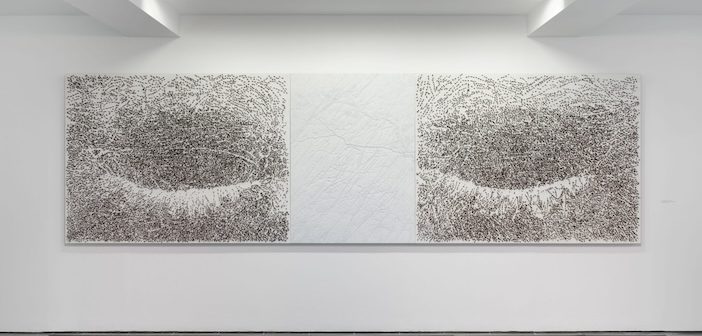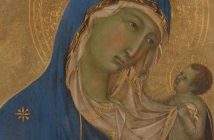The artist Guiseppe Penone, born in 1947 in the village of Garessio, in northern Italy, is inherently linked to the Arte Povera (‘poor art’) movement emanating from Italy in the 1960s. The title relates to artists using found objects, natural materials and simple techniques to create art.
Penone’s strongest bond is with his materials and the objective to study the relationship between people and the natural world. His body of work is as extensive as it is diverse; mixing paintings, drawings, skin transfers, tree rubbing and sculptures using a variety of materials from bronze and wood, gold leaf, wax, iron, bronze, and terracotta, marble and plaster, all used to create masterful, thought-provoking works of art.
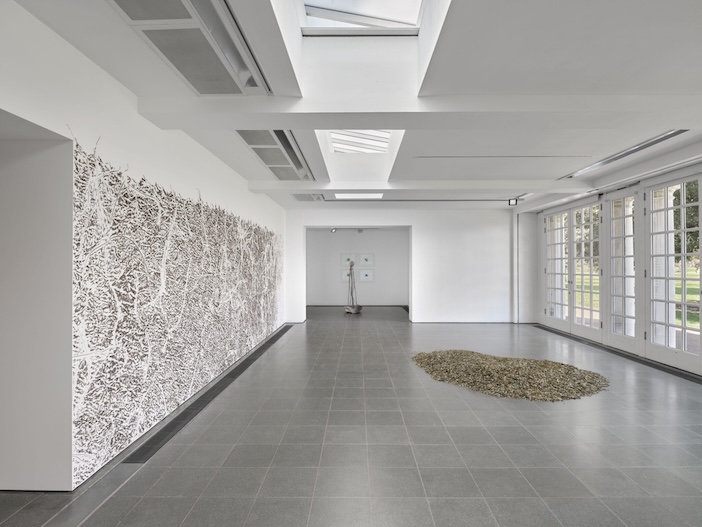
Giuseppe Penone, Thoughts in the Roots, 2025. Installation view, Serpentine South. © Photo: George Darrell. Courtesy Giuseppe Penone and Serpentine.
At the Serpentine South Gallery in Kensington Gardens, London his unpretentious, remarkable exhibition Guiseppe Penone: Thoughts in the Roots features works that range from 1969 to the present day. It is evident in the wall paintings on paper and fabric, and in the extraordinary room-surround sensory wall installation of laurel leaves Respirare L’Ombra (‘To Breathe the Shadow’), that Penone’s early years experiencing and embracing the forested landscape in and around Garessio, has affected his closeness to the natural world.
It is as if the clear air experienced outdoors in the forests and mountains of northern Italy is replicated within the gallery. On Respirare L’Ombra, a gold-cast sculpture of a human lung hangs with branches of leaves above and below it – exploring leaves as the creators of oxygen for living beings. Sofio di Foglie (‘Breath of Leaves’), a floor installation further investigates nature using organic materials to record Penone’s own breath. Initially, he lay on a heap of boxwood leaves, breathing air into them and smelling the scent of the natural, organic material. In the gallery display the imprint of Penone’s body can be seen in the indentations of the leaves, a record of his once-physical presence.
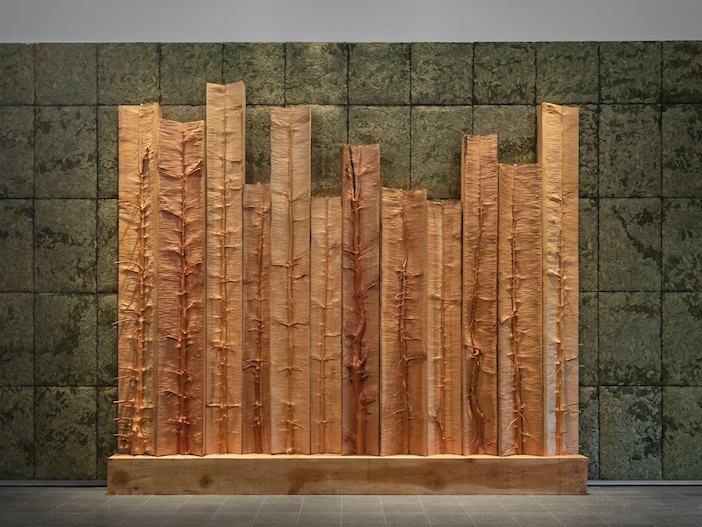
Giuseppe Penone, Alberi libro (Book Trees), 2017. White fir wood, cedar wood, and larch wood. ©Photo: George Darrell. Courtesy Giuseppe Penone and Serpentine.
For Penone, trees embody the ‘primal and most simple idea of vitality, culture and sculpture’. On one wall of the surrounding Respirare L’Ombra is a monumental sculpture of wood Alberi Libro (‘Book Trees’). He created this by carving away the outer rings of a mature tree, layer by layer, to reveal the sapling and branches at its core. It is fascinating to study with the realisation that the tree’s origins, its history remains within it, central to its life. In its natural form, Penone considers a tree as ‘a perfect sculpture’, and this work shows a tree’s evolution, its creation, growth and memory.
Other pieces are closely related to the natural and human world, and where they often merge. On one wall a large work consists of imprints of human skin, transfers made from Penone’s own body; an experimentation of ‘unrolling one’s skin’. The same method is used to transfer the outer skin of a tree, its bark formations – like tree rubbing – on to paper or fabric. The results are beautiful to see and connect the interchangeability of human bodies and plant life. Verde del bosco (‘Forest Green’) defines Penone’s skin ‘unrolling’ beyond human, to the vegetal. It depicts a lush green forest of trees, created by transferring the tree bark, branches and leaves, imprinted from living trees.
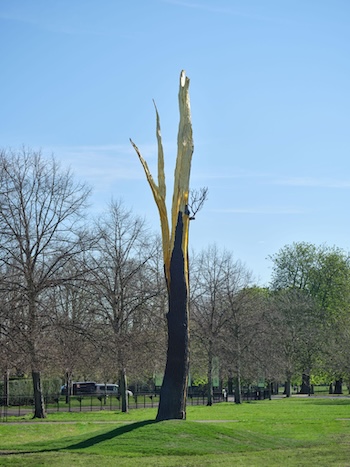
Giuseppe Penone, Albero folgorato (Thunderstruck Tree), 2012. Bronze and gold. ©Photo: George Darrell. Courtesy Giuseppe Penone and Serpentine.
What is evident, walking through this exhibition, is how perfect it sits within the Serpentine Gallery walls. The airy spaces are lit by near floor-to-ceiling ribbon windows, giving natural light and a sense of calm, which his work encompasses. Outside the gallery three trees in bronze are part of this collection. They stand within the wider circle of living trees in Kensington Gardens.
Penone began casting trees in bronze in the late 1980’s. One here, Albero folgorato (‘Thunderstruck tree’) is based on a one-hundred-year-old willow tree, from Belgium, struck by lightning. He has accentuated the dramatic split of its trunk using gold leaf. It is an extraordinary sight. The two other trees are attention-seekers too, linking rivers with trees, and river stones to human thought, a connection to the exhibition’s title. Larger river stones lay on the ground, smaller stones nestle in the forks of the bronze tree branches. It is surreal, bringing the trees to a life beyond their living existence.
This exploration of the natural world is a triumph; astonishing, memorable, and thought-provoking, and should not be missed.
‘Guiseppe Penone: Thoughts in the Roots’ runs at The Serpentine until 7 September 2025. Serpentine Gallery South, Kensington Gardens, LondonW2 3XA. Free to visit. For more information, please visit www.serpentinegalleries.org.
Header image: A occhi chiusi (With Eyes Closed), 2009. Acrylic, glass microspheres, acacia thorns on canvas, and white Carrara marble. ©Photo: George Darrell. Courtesy Giuseppe Penone and Serpentine.

